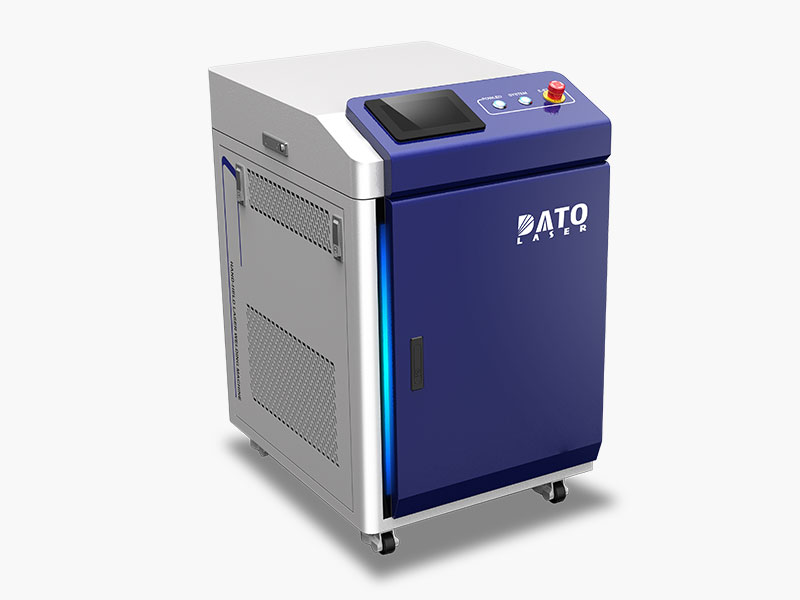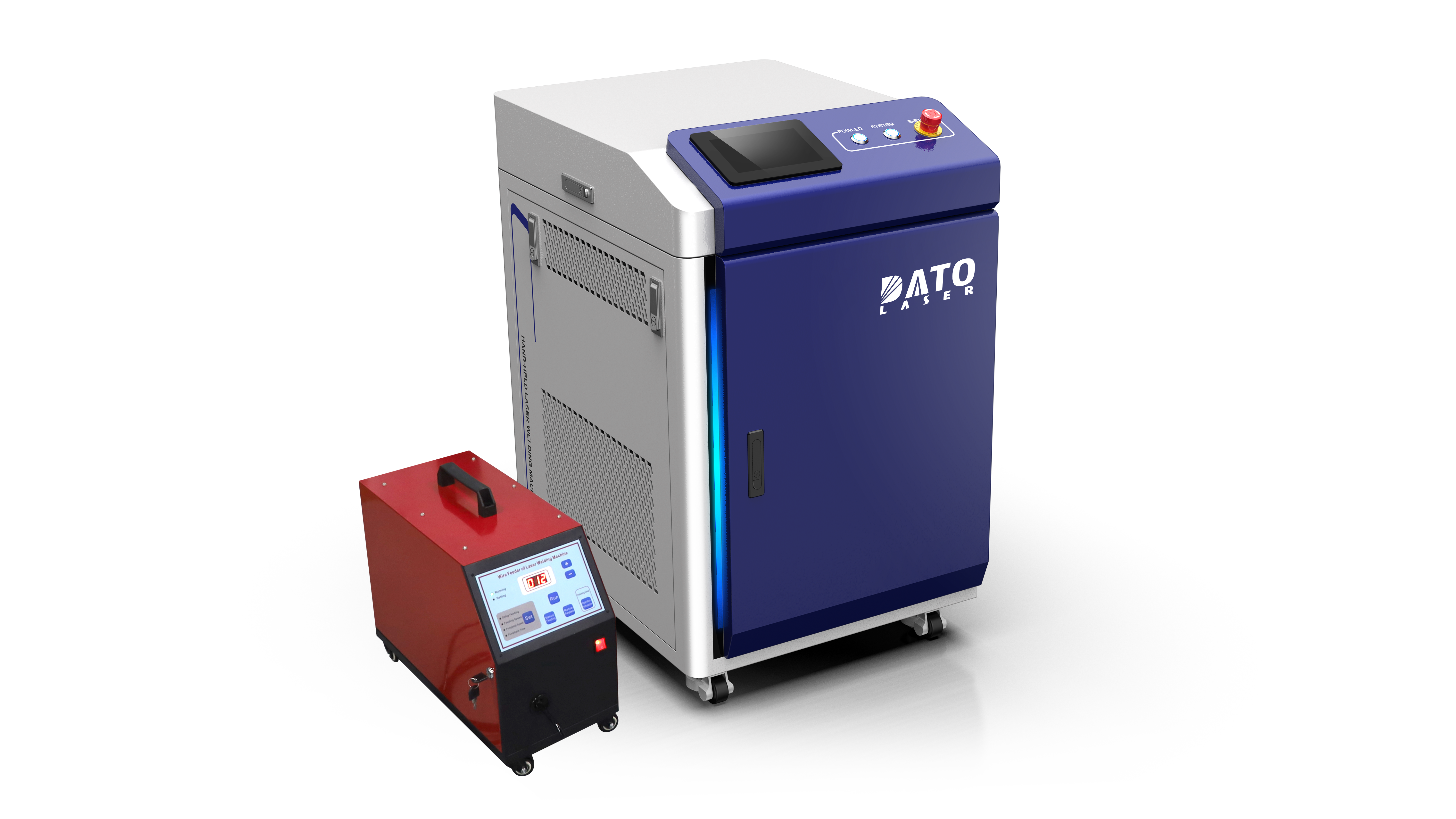Does Laser Welding Reduce Material Waste Compared to Traditional Methods?

In the realm of modern manufacturing, efficiency and precision are paramount. Businesses are constantly seeking ways to optimize their processes, reduce waste, and enhance productivity. One technology that has revolutionized the welding industry is laser welding. But how does it compare to traditional welding methods when it comes to material waste? At DATO and Leapion, we specialize in advanced laser welding machines, and we’re here to explore this question in detail.
Laser welding is a cutting-edge process that uses a highly focused laser beam to join materials. It offers numerous advantages over traditional welding techniques, including reduced material waste, higher precision, and faster processing times. In this article, we’ll dive into how laser welding minimizes waste, why it’s a superior choice for many industries, and how it contributes to sustainable manufacturing practices.
Understanding Laser Welding and How It Works
Before we compare laser welding to traditional methods, it’s essential to understand how the process works. Laser welding uses a concentrated beam of light to melt and fuse materials. The laser beam is incredibly precise, allowing for narrow and deep welds with minimal heat input. This precision is one of the key reasons why laser welding reduces material waste.
At DATO and Leapion, our laser welding machines are designed to handle a wide range of materials, including metals like stainless steel, aluminum, and copper. The technology is versatile, making it suitable for industries such as automotive, aerospace, electronics, and medical device manufacturing.
How Laser Welding Minimizes Material Waste
One of the most significant advantages of laser welding is its ability to reduce material waste compared to traditional welding methods. Here’s how it achieves this:
Precision and Accuracy
Traditional welding methods often require wider weld seams and additional filler material to ensure a strong bond. In contrast, laser welding delivers pinpoint accuracy, creating narrow and precise welds. This precision means less material is consumed during the welding process, reducing waste significantly.
For example, in industries like jewelry manufacturing or electronics, where small and intricate components are common, laser welding ensures that minimal material is lost. This not only lowers production costs but also contributes to sustainability.
Reduced Heat-Affected Zone (HAZ)
Traditional welding methods generate a large heat-affected zone (HAZ), which can distort the surrounding material and lead to defects or the need for rework. Laser welding, on the other hand, produces a much smaller HAZ due to its focused heat input. This results in cleaner welds, less distortion, and fewer errors, ultimately reducing material waste.
Minimal Need for Post-Processing
Because laser welding produces high-quality welds with minimal defects, there’s often little to no need for post-processing. Traditional welding methods may require grinding, polishing, or filling to achieve the desired finish, which can lead to material loss. With laser welding, businesses can skip these steps, conserving resources and reducing waste.
Comparing Laser Welding to Traditional Methods
To fully appreciate the waste-reducing benefits of laser welding, it’s helpful to compare it to traditional welding techniques like arc welding, MIG welding, and TIG welding.
Material Consumption
Traditional welding methods often rely on filler materials to create strong bonds. These fillers can add extra weight and cost to the final product while increasing material waste. Laser welding, however, typically does not require filler materials, making it a more efficient and eco-friendly option.
Energy Efficiency
Laser welding is more energy-efficient than traditional methods. The focused laser beam delivers heat precisely where it’s needed, minimizing energy consumption. Traditional welding methods, by contrast, often use more energy to generate the necessary heat, leading to higher operational costs and a larger environmental footprint.
Scalability and Consistency
In large-scale manufacturing, consistency is key to reducing waste. Traditional welding methods can be prone to human error and inconsistencies, leading to defects and rework. Laser welding, with its automated and precise nature, ensures uniformity across all products. This consistency reduces the likelihood of errors and material waste, especially in high-volume production environments.
Industries That Benefit from Laser Welding
Laser welding is a versatile technology that offers waste-reducing benefits across various industries. Here are some sectors where laser welding machines are making a significant impact:
Automotive Industry
In automotive manufacturing, precision and efficiency are crucial. Laser welding is used to create lightweight and durable components, such as car bodies and engine parts. By reducing material waste and improving weld quality, laser welding helps automotive manufacturers lower production costs and meet sustainability goals.
Aerospace Industry
The aerospace industry demands high-performance materials and exacting standards. Laser welding is ideal for joining complex components like turbine blades and aircraft frames. Its ability to produce strong, defect-free welds with minimal waste makes it a preferred choice for aerospace applications.
Electronics and Medical Device Manufacturing
In electronics and medical device manufacturing, small and delicate components require precise welding techniques. Laser welding’s accuracy and minimal heat input make it perfect for these industries. By reducing material waste and ensuring high-quality welds, laser welding helps manufacturers produce reliable and durable products.
The Environmental Impact of Laser Welding
In today’s world, sustainability is a top priority for businesses. Laser welding contributes to sustainable manufacturing practices by reducing material waste, conserving energy, and minimizing the need for post-processing. By adopting laser welding technology, companies can lower their environmental impact while improving efficiency and profitability.
At DATO and Leapion, we’re committed to providing innovative and eco-friendly solutions. Our laser welding machines are designed to meet the highest standards of quality and sustainability, helping our clients achieve their production and environmental goals.
Why Choose DATO and Leapion for Laser Welding Solutions?
With over 15 years of experience in the laser machinery industry, DATO and Leapion are trusted leaders in laser welding technology. Our commitment to research, innovation, and quality ensures that we deliver cutting-edge solutions tailored to your needs. Here’s why businesses choose us:
Advanced Technology
Our laser welding machines are equipped with the latest technology, offering precision, speed, and versatility. Whether you’re working with metals for automotive parts or delicate components for medical devices, we have the right solution for you.
Related Blogs
-
 Exploring the Safety, Precision, and Industrial Benefits of Laser Surface CleaningIn today’s fast-paced industrial world, where quality, efficiency, and sustainability are top priorities, manufacturers are constantly seeking better ways to clean metal surfaces without compromising material integrityBlog
Exploring the Safety, Precision, and Industrial Benefits of Laser Surface CleaningIn today’s fast-paced industrial world, where quality, efficiency, and sustainability are top priorities, manufacturers are constantly seeking better ways to clean metal surfaces without compromising material integrityBlog -
 A Complete Guide by DATO and LeapionIn modern industry, surface preparation and maintenance play a crucial role in achieving high-quality manufacturing results. Laser cleaning machines have emerged as one of the most innovative, efficient, and environmentally friendly tools for removing contaminantsBlog
A Complete Guide by DATO and LeapionIn modern industry, surface preparation and maintenance play a crucial role in achieving high-quality manufacturing results. Laser cleaning machines have emerged as one of the most innovative, efficient, and environmentally friendly tools for removing contaminantsBlog -
 Laser cleaning machines are revolutionizing industrial surface cleaning by offering a faster, safer, and more eco-friendly alternative to traditional methods. Whether removing rust, paint, oil, oxide, or other surface contaminants, laser cleaning has become a cutting-edge solution in manufacturing,Blog
Laser cleaning machines are revolutionizing industrial surface cleaning by offering a faster, safer, and more eco-friendly alternative to traditional methods. Whether removing rust, paint, oil, oxide, or other surface contaminants, laser cleaning has become a cutting-edge solution in manufacturing,Blog -
 Introduction: Transforming EV Battery Manufacturing Through Laser TechnologyThe electric vehicle revolution has accelerated dramatically over the past decade, bringing with it unprecedented challenges and opportunities in battery manufacturing. As global automakers commit billions to electrificationBlog
Introduction: Transforming EV Battery Manufacturing Through Laser TechnologyThe electric vehicle revolution has accelerated dramatically over the past decade, bringing with it unprecedented challenges and opportunities in battery manufacturing. As global automakers commit billions to electrificationBlog















